What To Look Out For - July 2018
The wonderful thing about wildlife is its everywhere, from an urban concrete jungle to a wild national park. My strongest memory of this was when I was in my early teens walking through my home town of Middleborough in late July, something caught my eye flying fast over the roof tops. It was a Merlin no doubt on its way from the North York Moors National Park to the marshes of Teesmouth. It suddenly made my boring trip into town exciting!
Unexpected encounters can also happen in or close to our gardens. Mid-summer is a great time to look very closely at ponds large or small. Dragonflies are emerging in the warm weather from their creepy larval cases. Dragonflies and damselflies (Odonata) spend most of their lives as larva living underwater, larger species can take several years to develop and emerge from a pond whereas the adult dragonfly stage only lasts for a few weeks. The cooler the water the longer the development takes. If you find what you think is a larva count its legs there should be six, the same number as an adult.
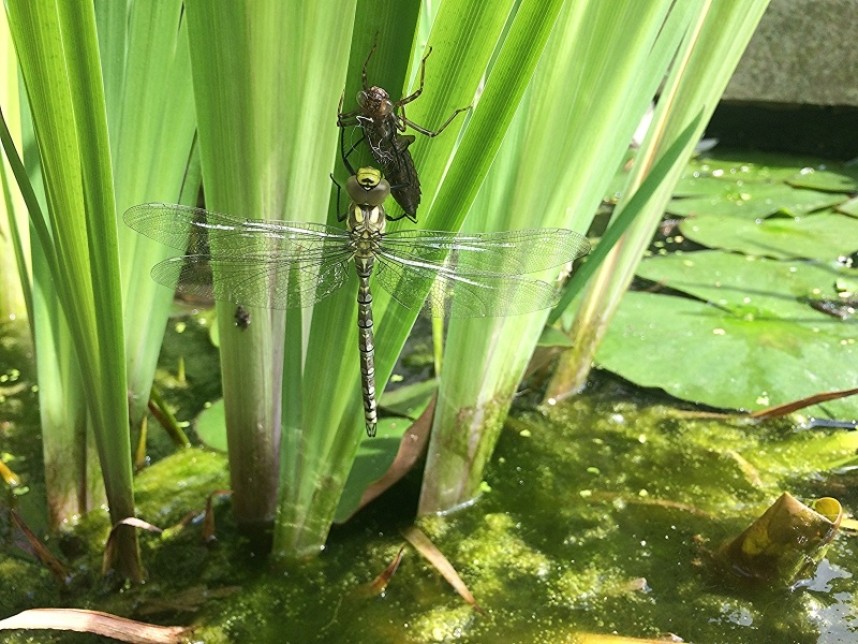
Southern Hawker © Jo Ruth
This Southern Hawker has only just emerged from its case and is in the process of pumping fluids through its body to give it the strength to fly. Dragonflies in the Hawker family emerge under the cover of darkness to reduce predation, this is especially important when you consider the whole process can take several hours. The shriveled case left behind is called an exuvia. The recent dry weather will have been great news to many species of Odonata, sudden storms or prolonged periods of rain can destroy the larval cases of emerging adults.
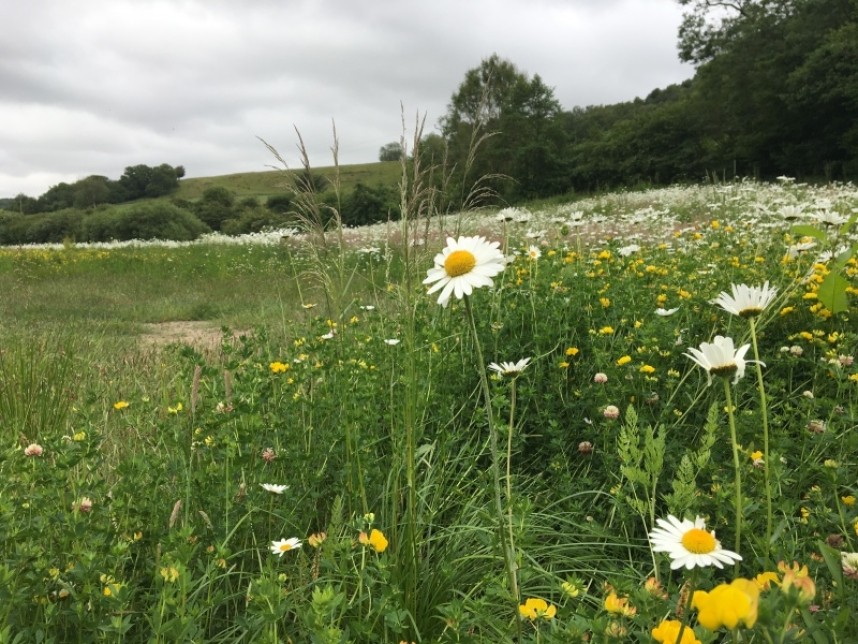
Flower meadow with Ox-eye Daisy © Richard Baines
Wild flower meadows have sadly become an increasingly rare feature in our landscape. A field full of vibrant colour, delicate scent and the sound of pollinating insects can have a profoundly beneficial effect on our well-being. I was fortunate enough to visit one such meadow recently in the North York Moors National Park. The farmer had sown a special ‘bumble-bee’ seed mix, and wow what a wonderful display of flowers! The dominant species here is Ox-eye Daisy, also called Moon Daisy in some parts of the country. They are not only great for insects they were once used as a tonic to relieve coughs and colds. Ox-eye Daisy is relatively easy to establish in a sown flower meadow, they can also be found growing wild on roadside verges where flowers have been allowed to develop.
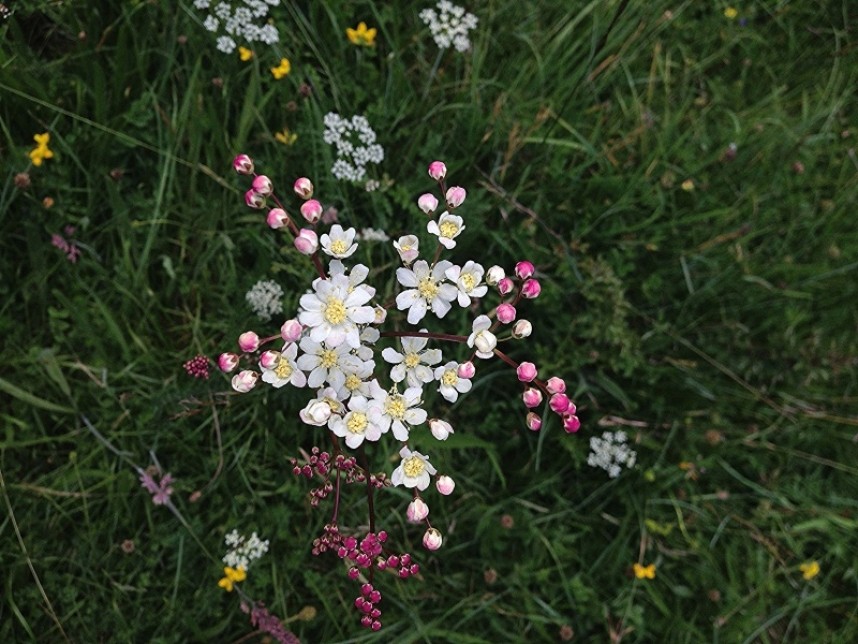
Unfortunately not all wild flowers grow so vigorously and commonly as Ox-eye Daisy. Many have become rare in the countryside. Dropwort is a good example of a flower which would have once been common across a large swathe of land from eastern Yorkshire to Cumbria in the west, following the line of calcareous soils created by the underlying geology of chalk and limestone. I’m always on the lookout for Dropwort at this time of year, the flowering head can be a wonderful mixture of pink closed petals and white open flowers.
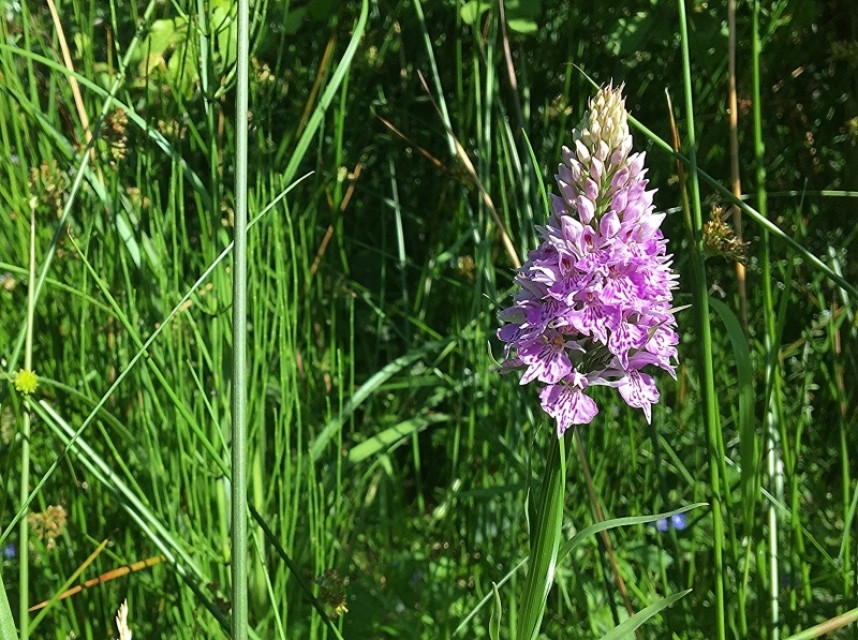
One of the most spectacular and common Orchids in bloom this month is the Common Spotted Orchid. It is particularly abundant by the side of limestone tracks in the Great Yorkshire forest where hundreds can sometimes be seen. Above the forests on the wide open heather moorland try looking for the similar but far less common Heath Spotted Orchid. These grow on more acid soils than Common Spotted and prefer wetter ground.
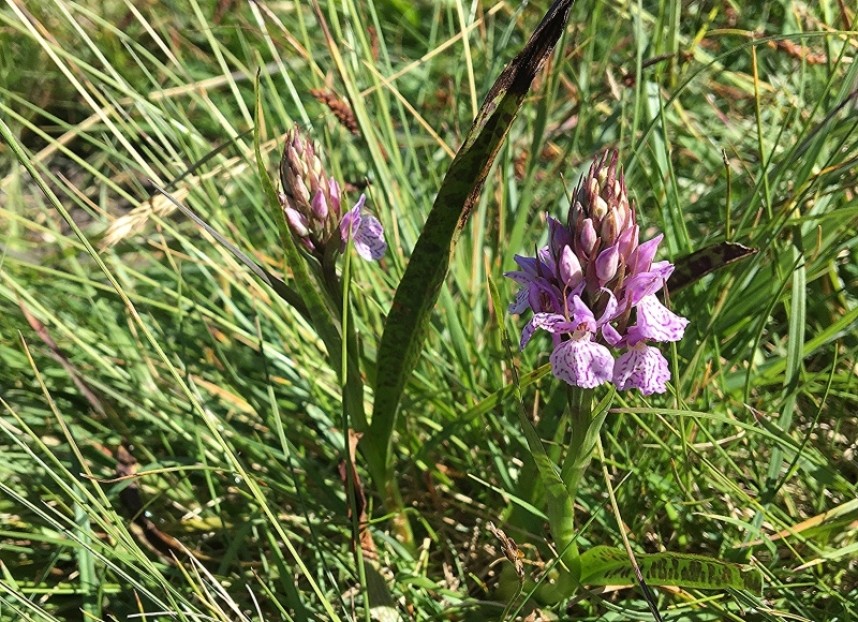
Check out the flowers of these Orchids. The prominent lobes on Orchids are also known as Labellum and Common Spotted has three of these. Common Spotted show a series of marks on the central lobe which form a double loop. Heath Spotted has far less prominent lobes with smaller dots or marks which do not form a loop.
For more information about one project run by local farmers in North Yorkshire to increase the number of wild flowers in our countryside Click Here.
Richard Baines
Yorkshire Coast Nature



 Back to Blog
Back to Blog
